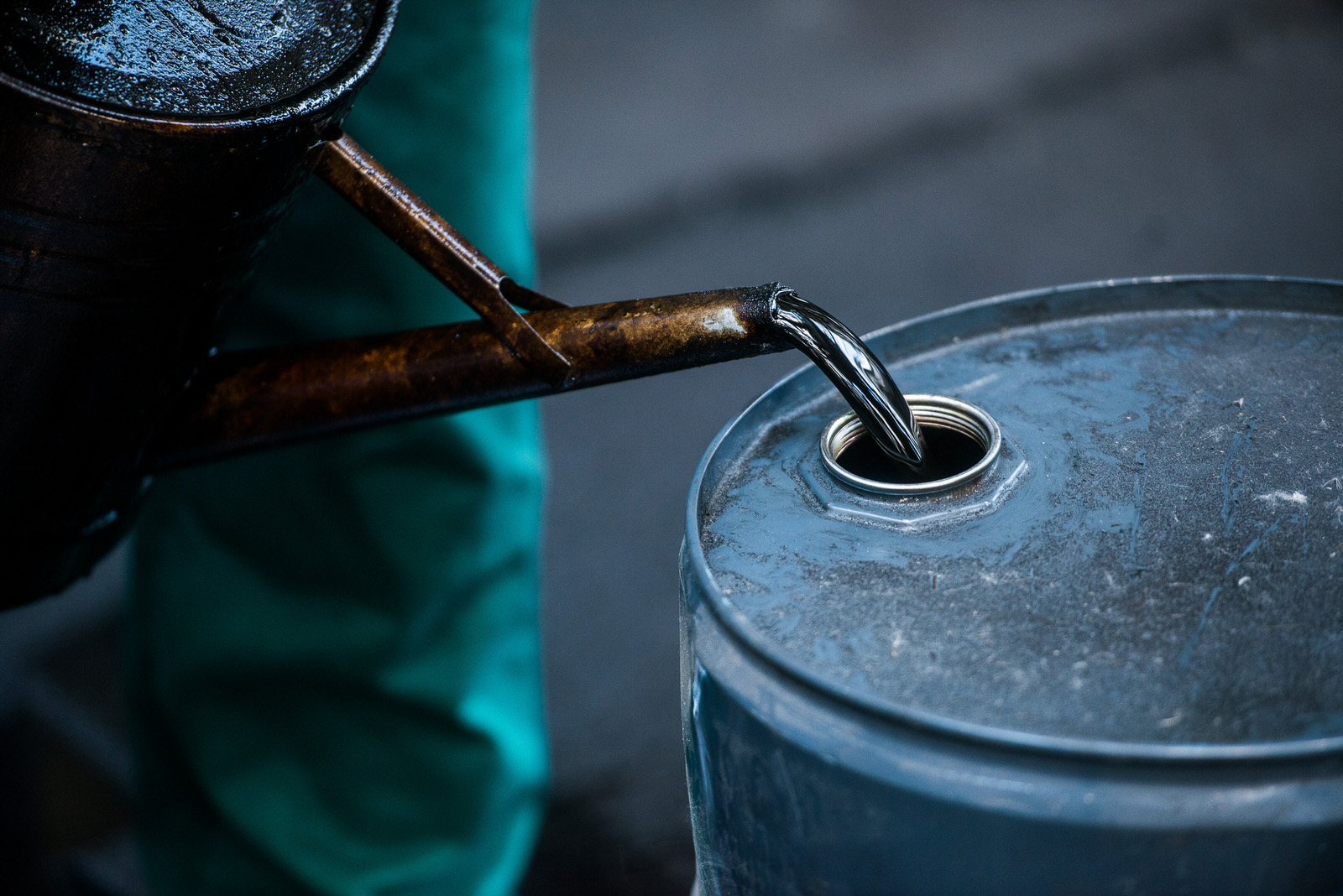Oil fell below $35 a barrel in New York for the first time since 2009 as Iran reiterated its pledge to boost crude exports, bolstering speculation OPEC members will exacerbate the global oversupply.
Futures fell as much as 2.7 percent to $34.67 a barrel in New York, the lowest since Feb. 19, 2009. They lost almost 11 percent last week, the biggest drop in a year. There’s “absolutely no chance” Iran will delay its plan to increase shipments even as prices decline, said Amir Hossein Zamaninia, the nation’s deputy oil minister for international and commerce affairs. Speculators in the U.S. have raised bearish bets to an all-time high.
Oil slumped last week to levels last seen during the global financial crisis, while speculators increased bets on falling U.S. crude prices to an all-time high after the Organization of Petroleum Exporting Countries effectively abandoned production limits. The supply glut will persist at least until late 2016 as demand growth slows and OPEC shows “renewed determination” to maximize output, according to the International Energy Agency.
Market Gloom
“Gloom nourishes gloom,” said Eugen Weinberg, head of commodities research at Commerzbank AG in Frankfurt. “The market is fully acknowledging that OPEC is no longer in price-control mode or providing a floor, and that the group is unlikely to change that strategy any time soon.”
WTI for January delivery fell as much as 95 cents to $34.67 a barrel on the New York Mercantile Exchange and was at $34.80 at 11:46 a.m. London time. The volume of all futures traded was 35 percent above the 100-day average. The aggregate volume of monthly WTI contracts climbed to a record of 1.596 million on the Nymex on Dec. 8. Each contract corresponds to 1,000 barrels of oil.
Brent for January settlement dropped as much as $1.31, or 3.5 percent, at $36.62 a barrel on the London-based ICE Futures Europe exchange, the lowest since Dec. 26, 2008. The European benchmark crude was at a premium of $1.93 to WTI.
In the U.S., senate negotiators are nearing a deal to allow unfettered crude oil exports for the first time in 40 years, though differences remain on renewable-energy tax credits that Democrats are demanding in return, according to people close to the discussions.
U.S. Exports
While any agreement could still collapse in the coming days — the deal faces opposition in the House — lawmakers are weighing the extension of solar and wind tax credits for as long as five years in exchange for lifting the crude-export restrictions, which were established to counter the energy shortages of the 1970s.
Iran, which expects international sanctions over its nuclear program to be lifted by the first week of January, has already secured customers for its planned supply expansion, Zamaninia said in an interview in Tehran. The government is also preparing to offer oil and natural gas contracts to investors. The country pumped 2.8 million barrels a day last month, data compiled by Bloomberg show.
OPEC, which set aside its output quota at a Dec. 4 meeting, is displaying hardened resolve to maintain sales, the IEA said in its monthly report Friday. While the group’s strategy has affected other producers, triggering the steepest fall in non-OPEC supply since 1992, world oil inventories will probably swell further once Iran restores exports, predicted the Paris-based energy adviser to developed economies.
Libya Talks
World powers said they persuaded some of Libya’s feuding factions to form a new government of national unity and act against Islamic State. Libyan representatives at a peace conference in Rome on Sunday pledged to sign a UN-brokered deal Wednesday that would be “the only legitimate basis for a solution” to the country’s crisis, said U.S. Secretary of State John Kerry. The OPEC member’s oil production has shrunk to about 375,000 barrels a day from 1.6 million a day before the 2011 rebellion that toppled Muammar Qaddafi.
Money managers’ short position on WTI futures and options rose 5.8 percent to 181,849 contracts in the week ended Dec. 8, according to CFTC data Friday. Net longs retreated to a five-year low.
U.S. natural gas for January delivery tumbled to the lowest level since January 2002 amid forecasts that mild weather will persist through the end of the month. Futures fell as much as 5.5 percent to $1.881 per million British thermal units on the Nymex.
Bloomberg

 Naira3 weeks ago
Naira3 weeks ago
 News4 weeks ago
News4 weeks ago
 Naira4 weeks ago
Naira4 weeks ago
 Naira3 weeks ago
Naira3 weeks ago
 Jobs3 weeks ago
Jobs3 weeks ago
 Travel3 weeks ago
Travel3 weeks ago
 Naira3 weeks ago
Naira3 weeks ago
 Investment4 weeks ago
Investment4 weeks ago






























